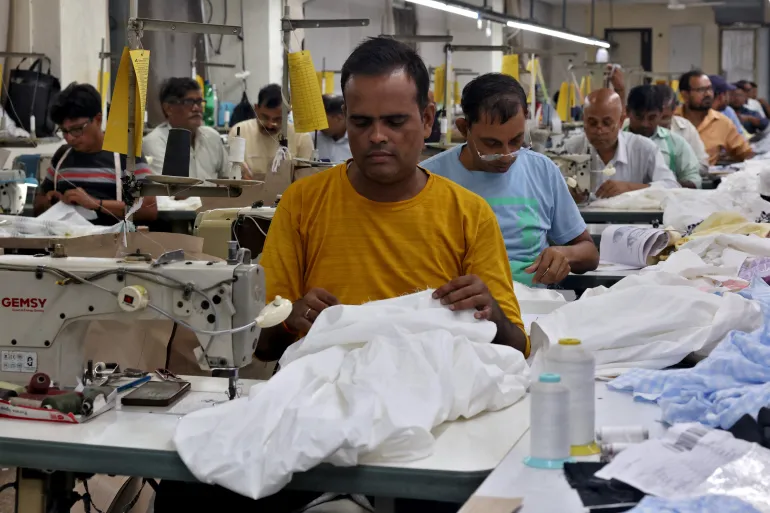India’s textile industry, one of the country’s largest employers, is facing a serious crisis. The United States has imposed a 50% tariff on Indian textile products, making it much harder for Indian businesses to export to the US — one of their biggest markets.
This sudden hike in import taxes is already causing job losses, cancelled orders, and factory slowdowns across India. Workers and business owners alike are deeply worried about the future.
In a spinning mill in Ludhiana, Pankaj Kumar, a 29-year-old worker, earns just 18,000 rupees ($204) per month. But now, he fears losing his job.
“The factory owner said we don’t know how much to make in the next few months. They might not need me,” Pankaj said.
Managers in Ludhiana say orders for yarn dropped by 30% in just two weeks after the tariff was announced. Many factories are waiting for clarity before they can start new production.
India’s textile sector:
Contributes 2.3% to the country’s GDP
Makes up 12% of India’s total exports
Employs over 45 million people, mostly rural workers and women
In 2024, India exported nearly $4.8 billion worth of textiles to the US. Now, with the high tariffs, those numbers are falling quickly.
Factories in Ludhiana, Panipat, Tiruppur, Surat, Coimbatore, and other major textile hubs are all feeling the pressure. Some cities, like Panipat, depend on the US for up to 60% of their textile exports.
Ashwin Aggarwal of Nahar Industries, which supplies brands like GAP and Tommy Hilfiger, says his company has not received any new orders since the tariff took effect.
“Small brands have stopped buying. Big ones are asking us to absorb 25% of the cost. That’s killing our profit margins,” he said.
Factories are now considering job cuts, cost-sharing, or moving operations to other countries like Bangladesh or Vietnam to avoid tariffs.
Many workers in the textile industry are home-based women who earn less than a dollar a day. Experts warn that if the situation continues, millions of low-income workers could lose their only source of income.
“The effects aren’t fully visible yet,” said Mary Anuklatham of a Tiruppur-based NGO. “But if this continues, the impact will be devastating, especially for women.”
The US, under President Donald Trump, raised tariffs in response to India’s continued oil trade with Russia. India called the tariffs unfair and unjustified, but Washington moved forward anyway.
The tariff was applied in two steps:
25% tariff on August 7
Raised to 50% on August 27
India now faces a higher tariff than many competitors — more than Bangladesh (20%), Vietnam (20%), and even China (30%).
Industry groups, like the Confederation of Indian Industry (CII), say the new tariff is a “death blow” to India’s global textile competitiveness.
“This isn’t just a hit to profits. It threatens our very survival,” said CII’s Amit Thapar.
Tamil Nadu’s Chief Minister, MK Stalin, has asked Prime Minister Modi to intervene urgently, as cities like Tiruppur are already seeing order cancellations.
To survive, many exporters are:
Exploring warehouses in other countries
Considering value-addition hubs in Vietnam and Bangladesh
Negotiating with US importers for tariff-sharing or support
But these strategies take time and investment, which many small businesses can’t afford.



